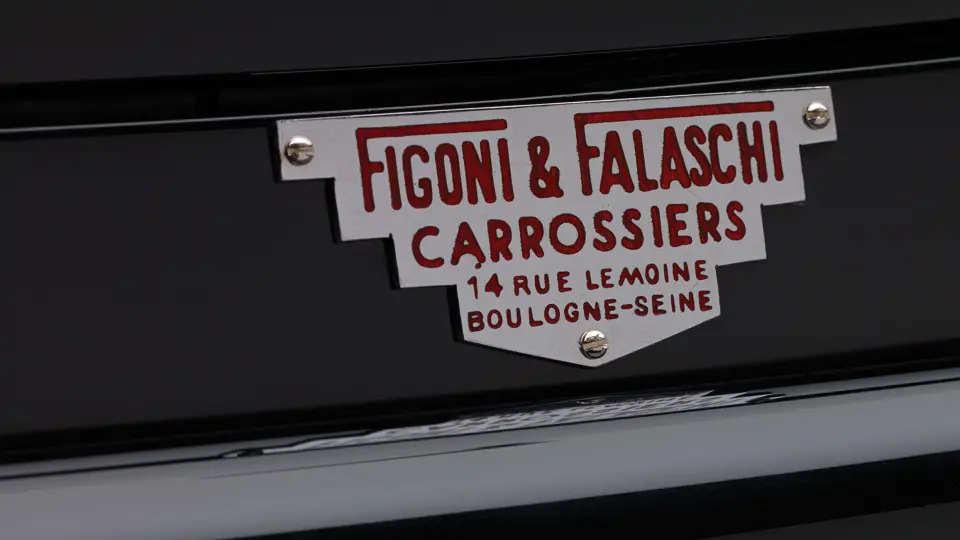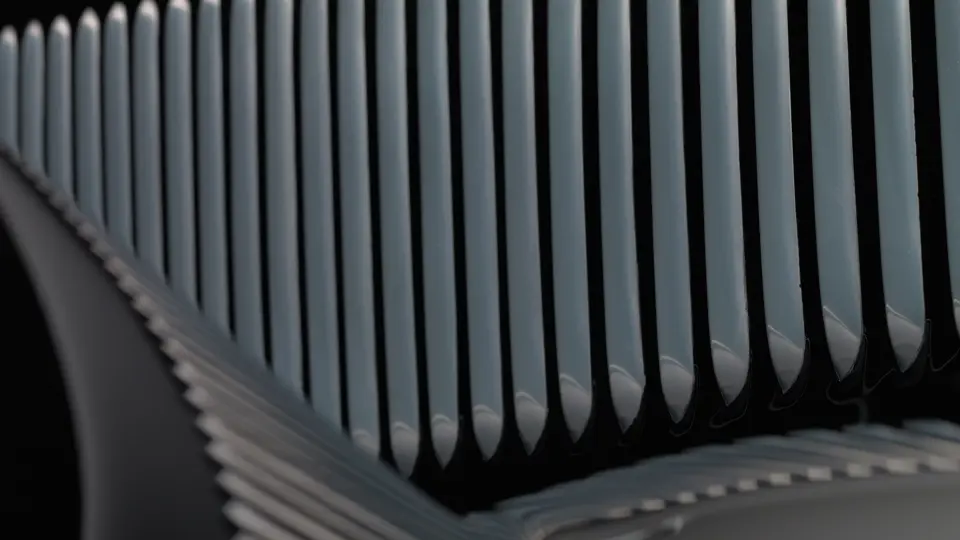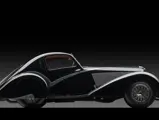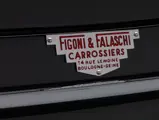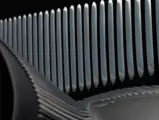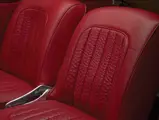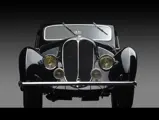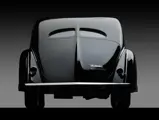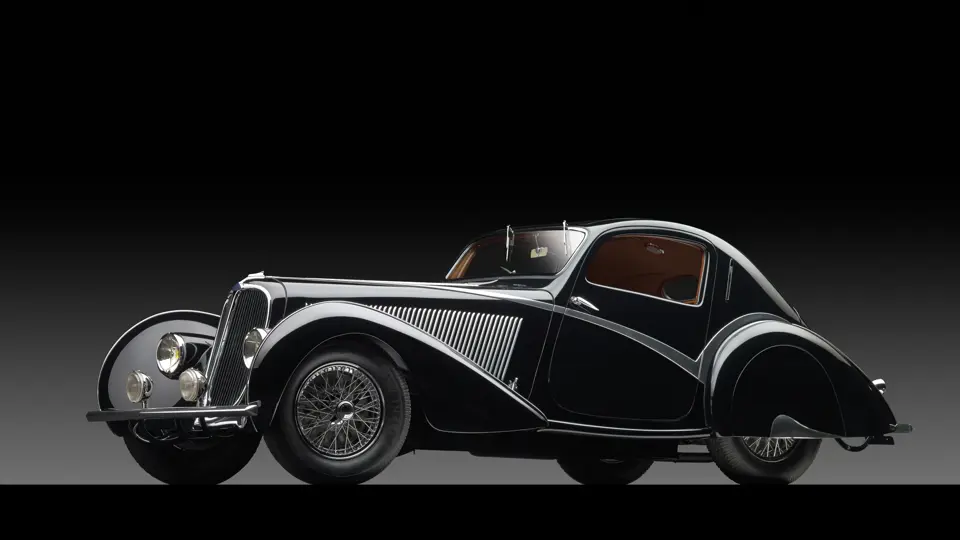
1936 Delahaye Type 135 Competition Court Teardrop Coupé by Figoni et Falaschi
{{lr.item.text}}
$2,420,000 USD | Sold
{{bidding.lot.reserveStatusFormatted}}
- A masterpiece of the “French curve”
- One of three surviving Figoni short-chassis coupes
- A singular example that is equipped with highly desirable integrated headlights
- Unique styling features and competition-specification chassis
- Retained by the factory upon completion
A straight line will lead the eye, but it takes a curve to keep the eyes excited. Joseph Figoni defined the automobile as a moving curve; his brilliant mind and pen expressed it as a cohesively fluid shape, likes drops of dense liquid that were held in place around an engine, wheels, and two passengers, who were lucky to be in such company. The result was this car, the Delahaye Type 135 Competition Court Teardrop Coupé. It was the ultimate showcase for passionate, hot French curves: it was full, rounded, flowing, and gorgeous. Few artists before or since have been able to work such out-and-out sex appeal into metal.
The ultimate embodiment of Figoni’s automotive sensuality is chassis number 47242, with Figoni et Falaschi body number 609; it is the last of six coupes built by the firm in 1936 on the short 2.65-meter Delahaye Type 135 chassis, and it is one of three to survive today. This chassis, known as the Competition Court, was described by Delahaye: Le Grand Livre as having “a cocktail of parts from the series three Type 135 chassis and the Specials,” as well as some specially made components. It was an “under the counter,” unavailable-to-mere-mortals homologation special—a pre-war 288 GTO for Lost Generation playboys who were friends of the house. This was the ultimate Type 135.
Chassis number 47242 was delivered to Figoni bare of coachwork in early September 1936, according to an analysis of other cars bodied by the coachbuilder around this time. The chassis displayed numerous competition engineering features, including a rare, competition four-speed manual transmission, outside-mounted rear springs, a low-mounted engine, an oil cooler mounted below the radiator, and a racing-style fuel tank with dual fillers.
Figoni et Falaschi’s coupe bodywork is unique from the other five examples, as it has a slightly different bonnet and features a single row of hood louvers. This is also the only known Type 135 with headlamps faired into the front fenders, which is a nod to the styling trend for the following year of 1937. This feature is not only highly desirable from a stylistic standpoint, as having the headlights positioned lower affords the driver a greater view of the road, but it also increases safety and competitiveness. Signature Figoni styling features include the central tail fin, twin rear windows, rear wheel “spats” matched by small vestigial fins on the rear fenders, and a pronounced molding that flows down the hood and the doors, to finish over the rear fender.
Interestingly, although these cars were all special commissions, the Figoni book specifically notes that chassis number 47242 was delivered to the Delahaye factory. Given this special treatment, it is likely that the car was flaunted at early concours d’elegance events, or it was used as a demonstrator.
The Delahaye was hidden away during World War II, and it resurfaced in the early 1950s. Whether by coincidence or due to its special status, chassis number 47242 came into the possession of Jean-Pierre Bernard, the sales manager for Delahaye and eventual founder and president of Club Delahaye, who recalled selling it in the Picardie area, near the city of Laon, around 1951 or 1952.
It has been verified that chassis number 47242 was registered in the Picardie area on May 28, 1952, with plate number 633 AN 60, which corroborates with Bernard’s recollections. After a stay with an owner in the Burgundy area, the Delahaye was sold to the Southwest of France, and it was registered with Emile Landais, of Gouex in Vienne, near Poitiers, on May 17, 1955, with plate number 916 BE 86.
On November 26, 1956, the Delahaye was registered in Paris, with plate number 3384 FN 75, under the name of Jean Escribe, a garage owner at 33 Raynouard Street Paris XVI. Most interestingly, the next owner, Daniel Roy Johnson, was a 40-year-old American from Minneapolis, Minnesota. He gave his address as Hotel Montalembert, on 3rd Montalembet Street Paris VII, and purchased the car on April 23, 1959. Mr. Johnson’s activities at that time are not known, but it is believed that the car stayed with him during his time in Europe, and it did not travel to the United States.
After Johnson, 47242 crossed over the French-Italian border and became the proverbial sleeping beauty, where it lay dormant for the next 40 years, reportedly near Lake Garda in Italy. In the late 1990s, chassis 47242 reemerged from its slumber, and news of its survival was announced when it was purchased by Christoph Grohe, of Geneva, from its caretaker, a garage owner in Brescia. Still largely complete, its sunroof had been closed over, but the mechanism for it remained under the sheet metal, and the original chassis plate, showing 47242, was still properly affixed to the firewall.
After finding a new owner here in the United States, the car was fully restored for concours display. Soon after its discovery, the car had been fitted with a post-war engine. As part of providing the Delahaye with the restoration it deserved, a correct, original, competition-specification engine was sourced and installed. The extremely rare engine reportedly came from within a few kilometers of the location where the car had lain for so many decades. Given this geographic proximity, its rarity, and the fact that the block has the correct date code for 1936, along with the special Solex carburetors, it is believed that this may, in fact, be the original unit.
All other mechanicals were fully rebuilt, the wooden skeleton was repaired in keeping with the level of craftsmanship displayed by Figoni et Falaschi, and the body was carefully prepped and painted to display the incredibly lustrous black finish found today. The interior was similarly restored, and it includes a racing-type tachometer and other blue-faced gauges, which are mounted in the beautifully engine-turned dash. The feature of the interior is the rich, red leather upholstery, which is inset with ostrich and surrounded by ornately carved polished wood trim.
The completed car debuted at the 2001 Pebble Beach Concours d’Elegance, where it garnered a class award. It has since been carefully maintained and admired in a collection with other exceptional motor cars of this caliber. In May 2013, the car reappeared on the show field and was awarded with the coveted Best of Show awards at the Concours d’ Elegance of Texas and the Celebration of Automobiles at the Indianapolis Motor Speedway; both awards were amazingly achieved within one week of each other. Documentation for this car includes a copy of a 1998 letter from Claude Figoni, in which he authenticates the body and provides the original delivery information, as well as photos of the car in its original “as-found” condition, proving the authenticity of its racing features.
Here is offered the best in 1930s competition engineering that has been transformed by Joseph Figoni’s sensitive eyes and artist hands into a voluptuous sculpture of leather, aluminum, and steel, with each element poised with the tense, shimmering excitement of a suspended teardrop.





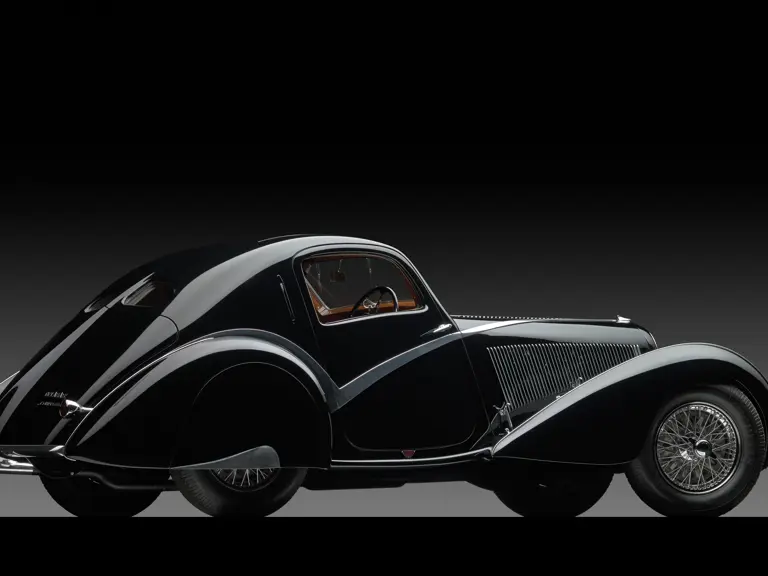
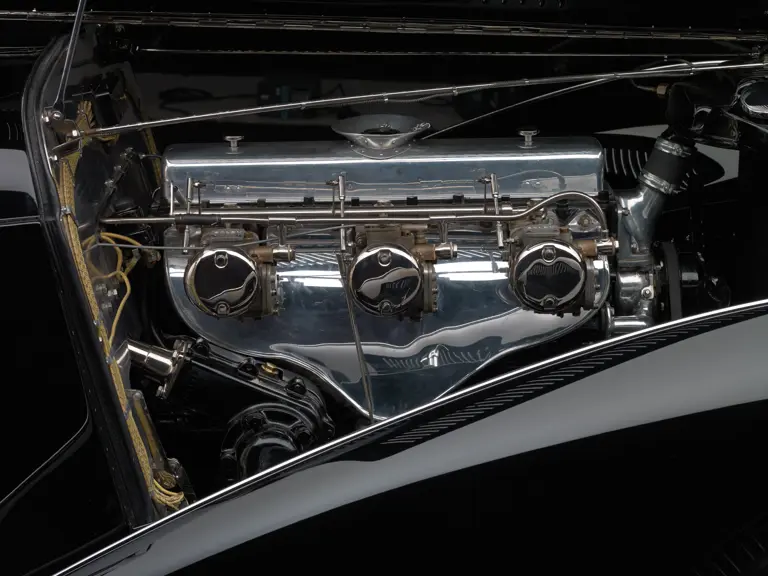


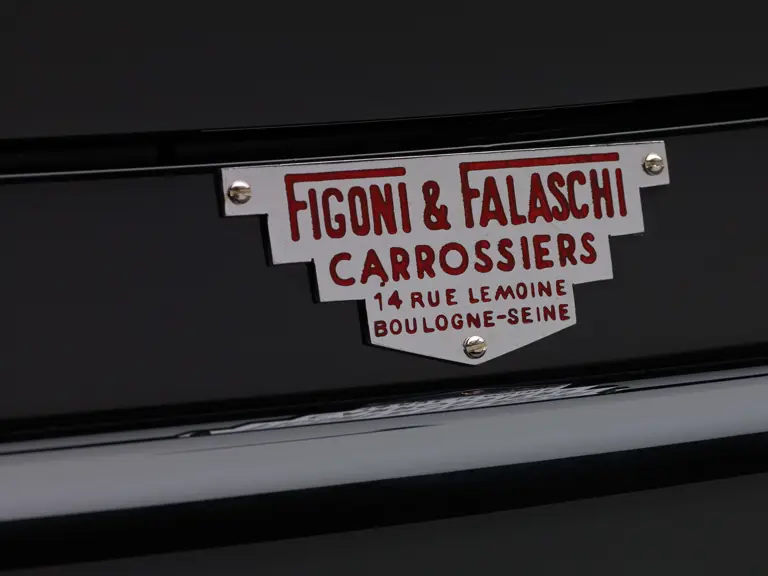

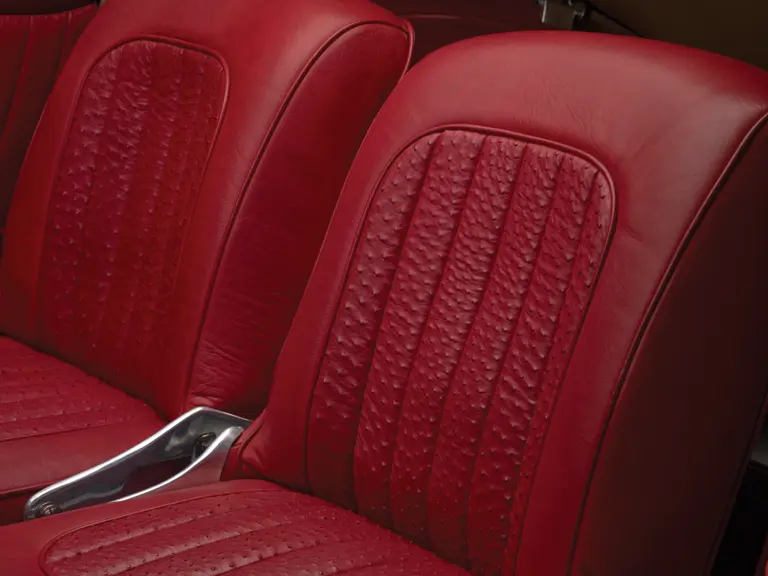
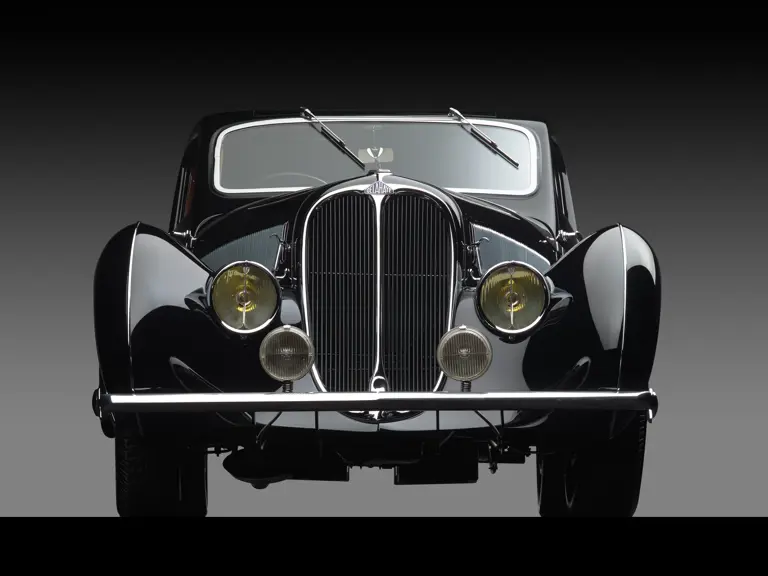
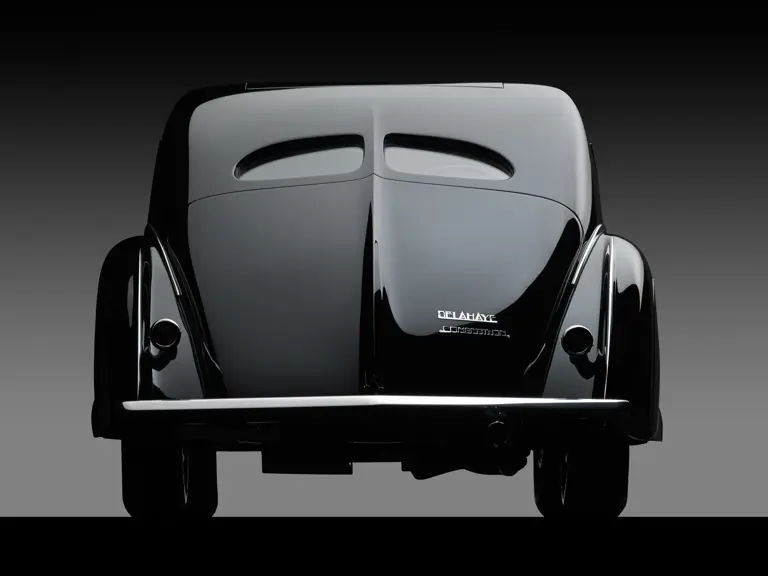
 | New York, New York
| New York, New York

